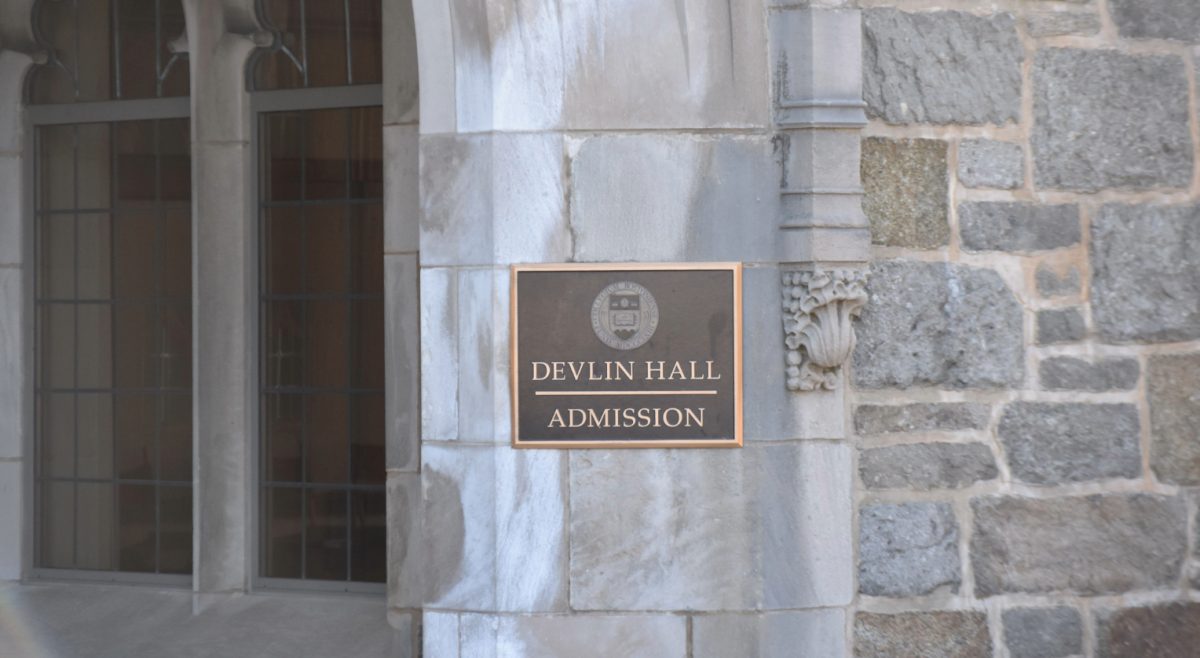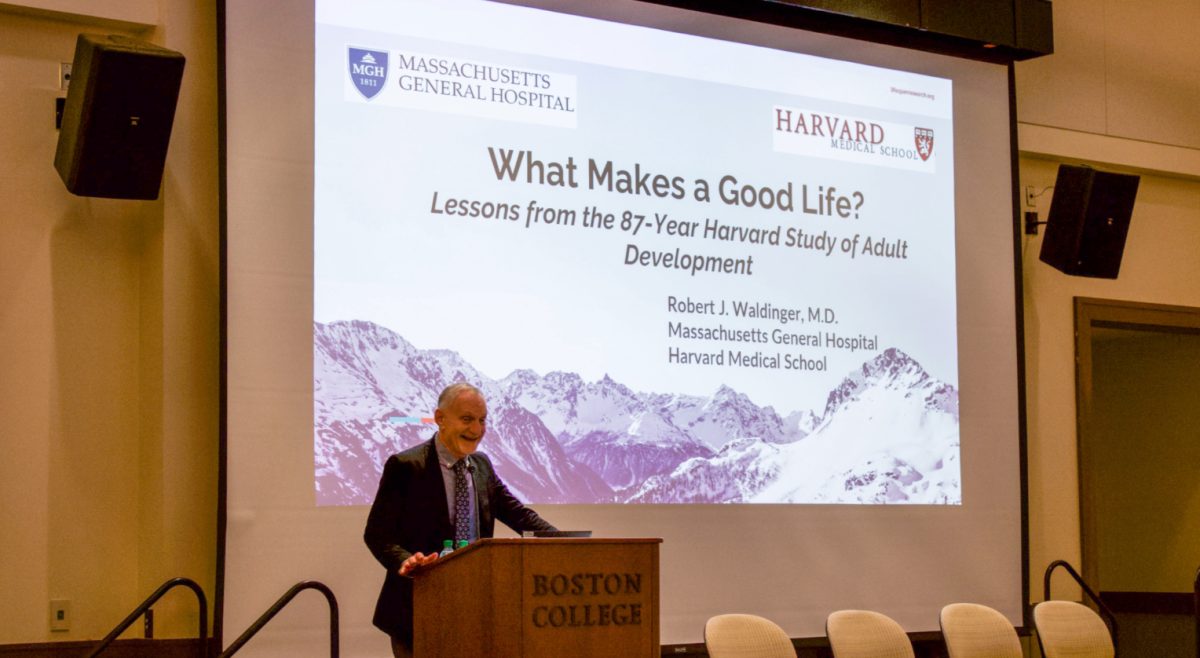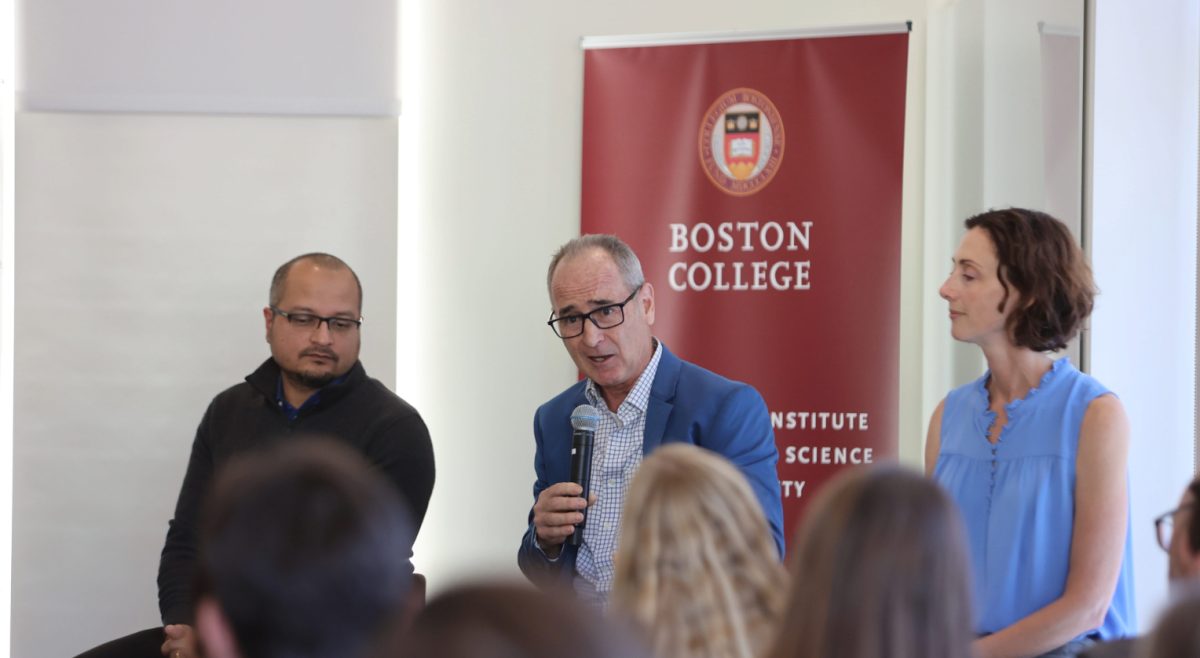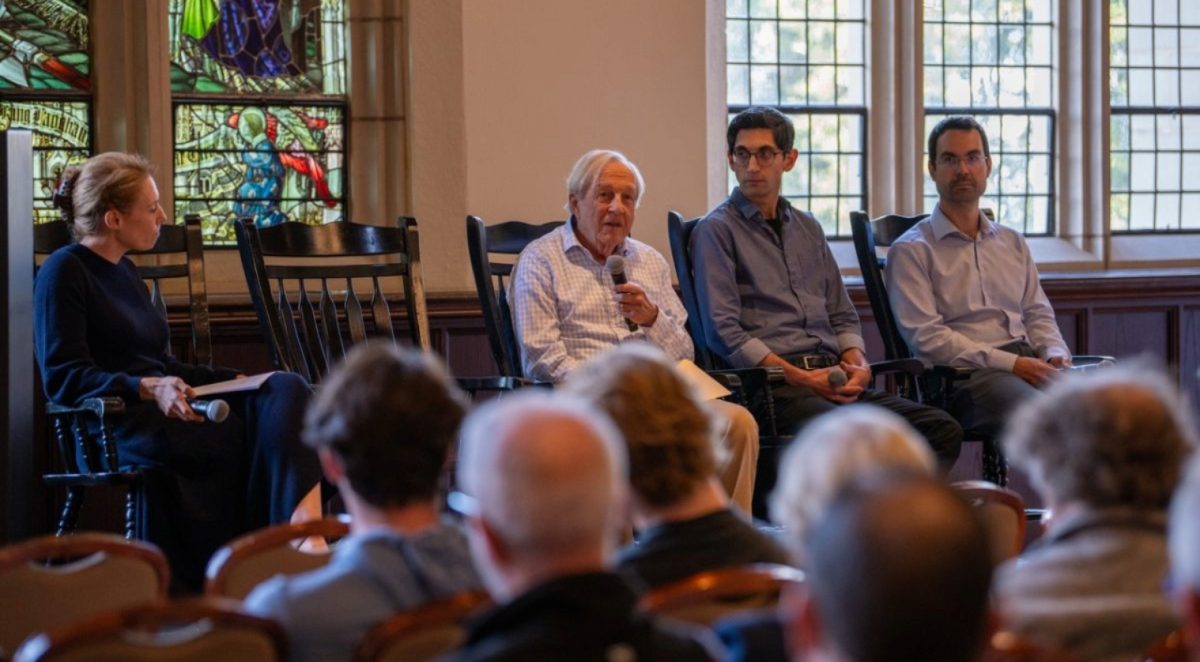Unlike many institutions of higher education, Boston College does not have a faculty senate.
The University did not always lack a governing faculty body, however. In the 1960s and 1970s, the University Academic Senate (UAS) was in operation. According to Michael Malec, a professor in the sociology department and the treasurer of the BC chapter of the American Association of University Professors (BCAAUP), UAS consisted of 50 percent faculty members, 25 percent administrators, and 25 percent students. In the late ’70s, though, the senate shifted to mostly faculty dealings, then to a forum for faculty in the College of Arts and Sciences, and then faded away at the end of the 1980s as meetings were more and more sparsely attended.
“I did notice very early on that there was no really effective faculty representation,” said Michael Clarke, a retiring professor in the chemistry department and the former executive vice president of BCAAUP, who arrived at BC in 1976. “There was an Arts and Sciences faculty senate that I was on, and that could have been effective-it was in the days when Bill Neenan was Arts and Sciences dean, and he always came to those meetings, so you had a direct chance to talk to someone who would listen in those days. But it never really voiced an opinion while I was on it-except on parking.”
According to Malec, the idea of a faculty senate did not reemerge until the turn of the millennium.
In 2006, faculty members attempted to hold an election to form a faculty senate. Judith Wilt, a professor emeritus in the English department and then the chair of the interim faculty senate (IFS), a body consisting of elected members of University-wide committees which met with the goal of creating an official faculty senate, stated in a 2010 document released to the AAUP that the IFS submitted its proposal for a Faculty Senate in a referendum to the faculty in October of 2006.
With 42.7 percent of eligible faculty voting, the measure passed at 88.08 percent approval, according to the report. “However, the Provost … declined to allow the faculty member who conducts elections for all committees to conduct the election for the 10 at large members of a new Faculty Senate, noting the provision in the Preamble to the University Statutes that the Board of Trustees reserved to itself the power to ‘establish senates, councils…,'” the document stated.
After the election in 2006 was halted, faculty movement toward the creation of a senate stagnated somewhat, picking up steam again a few years later. Vice Provost for Faculties Pat DeLeeuw, who has been at BC since 1979, indicated that the administration would not be averse to the creation of a senate, and recalled correspondence with the BCAAUP chapter in May of 2010.
“The AAUP chapter wrote to us and asked if they could have an election to a faculty senate using our electoral process,” DeLeeuw said. “We wrote back and said, you know, according to the BC statutes, the Board of Trustees has to approve a University-wide body like this. But we’re happy to have a proposal to take to the Board of Trustees … we never got a response.”
The correspondence to which DeLeeuw referred stemmed from a letter sent by Susan Michalczyk, an adjunct professor in the A&S Honors Program and the president of the BCAAUP. She wrote to Provost and Dean of Faculties Cutberto Garza in May of 2010, stating BCAAUP’s disagreement with the Provost’s Office over the role of the Board of Trustees.
“BCAAUP appreciates that the University Statutes and Bylaws address the establishment of an official university faculty senate and that your office does not wish to usurp the powers of the Trustees in this regard,” the letter read. “Indeed, the Statues and Bylaws imply that the Trustees could and might wish to approve an existing deliberative entity as the official university body. BCAAUP seeks to provide the Trustees with this opportunity.” She went on to inquire as to whether the BCAAUP could use Faculty Microcomputer Resource Facility, the standard electoral mechanism, to hold the election.
Garza’s reply, dated May 18, 2010, insisted that approval from the Trustees needed to be given before an election could be held. “You suggest that a reasonable next step toward the approval of such a body by the University Trustees is to hold an election of members of the senate,” his letter read. “It seems that the approval of the faculty senate by the Trustees logically precedes an election of its members. With this end in mind, I propose the following course: faculty colleagues write a proposal for a faculty senate that can be presented to the Academic Affairs Committee of the Board of Trustees. If the Academic Affairs Committee approves the proposal (or a modification of it), the proposal would be discussed at the next meeting of the full Board for its consideration.”
The powers of the University Board of Trustees, as enumerated by Article 2, Section 12 of the Bylaws of the Trustees of Boston College-adopted in 1972-include the ability “to authorize the establishment and disestablishment, or approve the constitution, of official senates, councils, boards or other organizations of administrative officials or members of the faculty or student body of the University.”
The BCAAUP and the Provost’s office seem to interpret these words in different ways, and the sticking point over the formation of a faculty senate appears to be the point at which the Board of Trustees weighs in.
The disconnect around the role of the University Board of Trustees articulated in this 2010 exchange, and more recently in letters to The Heights, is not new-a document from 1983 by Rev. Arthur Madigan, S.J., compiled for a committee that was in the process of revising the constitution of the then-extant Faculty Senate, stated that “The Senate came to take the view that the constitution ought not to be submitted to the Trustees for approval, that approval from the Trustees would compromise the Senate’s responsibility to the faculty.”
This view endures among some faculty members to this day. “I maintain no-that the faculty can form any body it wants to, any time it wants to,” Clarke said. “The Board of Trustees can choose to accept that as the official University Academic Senate-or not. That’s my view of it, so that the faculty could go ahead and put together its own body any time. The statutes don’t forbid that, because it’s just a group getting together to discuss … the Trustees certainly have the right to accept that as the official University senate or not, but it certainly could be formed independent of the Trustees’ approval.”
Garza disagreed, maintaining that while a group could be formed without Trustee approval, it could not be termed a faculty senate, nor function as one, without going through the Board of Trustees.
“Faculty governance is extremely important-there’s no way that one can minimize it,” Garza said. “If there’s any disagreement, it’s not whether it’s important-it’s how do we build it? … And the only body that by statute can create a University senate is the Board of Trustees.
“If in fact there’s a proposal made-there’s nothing to prevent faculty coming together, saying, this is how we would like a senate to look, have the Board weigh in … so that when it comes to them, they’re informed, rather than present them with a ready-made product,” he said. “How can this office short-circuit the Board of Trustees, who in fact have the authority? We can’t elect people to a body that doesn’t exist.”
A few select committees to which faculty members are elected currently do exist. The committee with the broadest mandate is the Provost Advisory Council (PAC), which includes elected faculty members from the College of Arts and Sciences as well as each of the professional schools. Faculty members are nominated and elected by voters from their respective schools.
“We do treat that as a representative body,” DeLeeuw said. “We ask Council members to bring agenda topics for the year, we ask them to communicate with their constituencies, we put the minutes of the meetings on our website-so we try to make sure that, to the extent that people are interested, people know what’s on the agenda for the [PAC], and the [PAC] can be receptive to what’s going on on campus.”
According to DeLeeuw, the PAC recently discussed issues such as promotion procedures and the grievance process for non-tenure track faculty, as well as the University budget for the 2014 fiscal year. “Whether this is sufficient for faculty governance is really a matter of opinion,” DeLeeuw said. “We don’t have a faculty senate currently mostly for historical reasons. We had one … it withered on the vine, and we never recreated it.”
Michalczyk remained adamant that a governing faculty body, formed independently of the trustees, is the goal of BCAAUP.
“That’s our hope-to have a senate with a standing committee of faculty and a handbook, that will allow both sides to engage more openly, more immediately-so that we can avoid the rumors, the innuendo, the suggestion, the confusion,” Michalczyk said. According to her, BCAAUP has attempted to be a central place for communication over the past three years. “[The work of BCAAUP] is a first step in building awareness among faculty, and in demonstrating to the University that the faculty does want to have a say,” Michalcyzk said. “Because we do care about the University, about maintaining the high standards we have, and about our students.”
Malec agreed, stressing that faculty should have an equal say in decisions that affect them. “A lot of the difficulty at Boston College is-in many respects, the administration is benign,” Malec said. “They’re not the ‘evil empire.’ But it is, to me, very much a top-down kind of governance structure. We are one of the very, very few major universities in the country that does not have a faculty senate, or some kind of faculty governance body … some entity that gives a primary voice to the faculty.”






